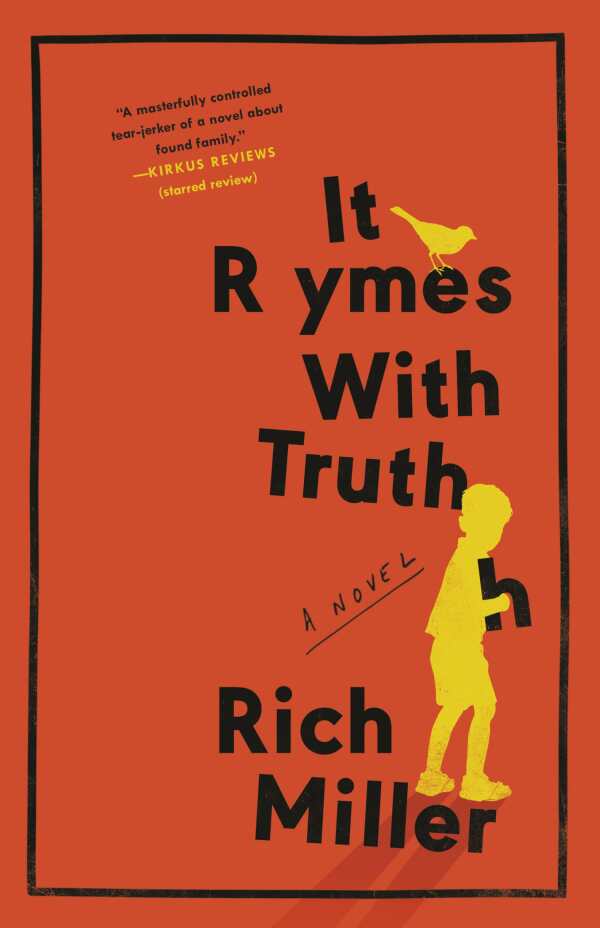It Rhymes with Truth
- 2024 INDIES Finalist
- Finalist, Humor (Adult Fiction)
The nature of memory is interrogated at every turn, and the possibility of love is never denied in It Rhymes with Truth, a poignant novel about a cross-generational friendship.
With equal parts wit and tenderness, Rich Miller’s heartfelt novel It Rhymes with Truth looks for answers to the question of loneliness in the relationship between a young boy and an old woman.
The unnamed narrator, a teenager reflecting on his childhood, is writing a memory book. He writes in the second person, always addressing Ruth, trying to prompt her into remembering their shared past. Their lives converged when the narrator was eight years old with no guardian to speak of. He trawled the patios of a nursing home looking for scraps of food, going mostly unnoticed and sometimes shooed. That is, until he found himself on Ruth’s patio.
Through the promise of sweets, television, and baseball games, Ruth wrapped him in a love he swore he did not want. Both were suffering under the weight of loneliness, and both needed the other more than they cared to admit. Their living situation was made more complicated by having to hide the narrator’s presence: children were not allowed to live in the building. When a nosy neighbor threatened this tenuous existence, Ruth escalated her efforts to keep them together to absurd and consequential heights. A shocking act of violence brought the balance crashing down.
Ruth and the narrator play off each other like a comic and straight man duo, opposite to what their ages might suggest. Where the narrator is terse, distrustful, and loath to admit to pleasure in even the smallest doses, Ruth is bombastic and affectionate. One of the only rules they can agree on—or “truisms,” as they term them—is never to talk about the past. “Yesterday is over. Today is what matters, and what matters is that you’re here,” Ruth insists. As the narrator grows older and struggles to cope with a changed Ruth, however, the truth of the past becomes more important than ever.
The ambitious form of the novel—it is itself the memory book the narrator is writing—lends it a confessional, voyeuristic tone. The narrator is writing to an audience of one. Scattered throughout the pages are ephemera from the life Ruth and the narrator shared, like sketches of birds, Sudoku puzzles, and sticky notes. Footnotes loop back on endless inside jokes. Affection and regret bleed through the prose, but not without a heavy dose of evasion. The never-ending puns might fall flat were it not for the narrator’s painful self-awareness.
Though the nature of memory is interrogated at every turn, the possibility of love is never denied. After Ruth enters a decline, another resident of the nursing home leaves the narrator with advice: “It’s not possible to save another person. You can’t do it for them, no matter how much you love them. Only they can.” Whether the narrator believes he can save Ruth fluctuates from moment to moment, but what does not change is his determination to try.
The novel It Rhymes with Truth burns with compassion and delights in all of the absurd, beautiful, and painful ways that people try to care for one another against the crushing weight of alienation.
Reviewed by
Luke Sutherland
Disclosure: This article is not an endorsement, but a review. The publisher of this book provided free copies of the book and paid a small fee to have their book reviewed by a professional reviewer. Foreword Reviews and Clarion Reviews make no guarantee that the publisher will receive a positive review. Foreword Magazine, Inc. is disclosing this in accordance with the Federal Trade Commission’s 16 CFR, Part 255.


